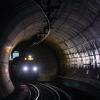Review: tickling disaster art at the Gothenburg Art Museum

War, covid pandemic and climate disasters, including economic, democratic and technological breakdowns. This has characterized the news reporting in recent years. An unstable world situation that has made most of us crisis -conscious and afraid of an imminent social collapse.
The exhibition “Apocalypse. In other words, from the ultimate judgment to the climate threat ”at the Gothenburg Art Museum is just right in time. It is a solid, research-based review of downfall's art history-from the threatening biblical visions of the late 14th century to dystopian scenarios in modern and contemporary art. Disaster motifs in literature, film and computer games are also investigated in the catalog, where researchers and writers receive explosive support from cartoonists.
Popular culture has also been given its own small room in the exhibition, built around three themes on three floors. The selection of hundreds of works is based on the museum's collection, focusing on Nordic and Western European art, supplemented with 26 deposits and contributions by three invited contemporary artists.
First eye -catch äR Hannaleena Heiska's « Rachael », a character from the science fiction movie « Blade Runner », embodied as a blank staring replicant in synthetic colors. The women's figure from 2012 is flanked by Antony Gormley's lead -covered male sculpture from 1983, a defense prepared with knotted fists, and Nastja Säde Rönkkö's activist video works. She addresses the consequences of global warming, standing in various affected landscapes with signs as for nature's action.
« The threat from the contemporary » is the theme on this top level, with almost exclusively modern and contemporary art that mainly depicts political dystopia. The curators Kristoffer Arvidsson and Eva Nygårds have thus chosen to start in the present, a rear order for me in a historical exposé. Though still understandable, given the stated goal of giving perspective on the turmoil in our time.
Here is also a desire to mix works by well -known artists with forgotten or unknown names. An enchanting discovery is the Norwegian Rolf Groven, whose satirical paintings are likely to be extensively reproduced in Norwegian textbooks. The Grove's 70s « Give him a future » shows a sad little boy surrounded by oil barrels, factories and nuclear power plants, completely alone in a poisoned environment. The painting is a fire torch and at the same time heartbreaking, despite the obvious operation with the crying children of the haystroke.

In the presentation of exhibitionN is talked about a dramatic scenography – though in the halls the lighting is muted and the walls are black painted with elements of shiny wedges, whose pointed shapes return in podiums and free -standing wall sections. High up in the ceiling, an orange -red light flames in some places, but the exhibition design is still significantly dimmed. And thus appropriate in my eyes.
Because it needs calm around the large number of works with a lot of powder in and a fast -paced, bustling and detailed imagery.
A fascinating example is the Norwegian underground artist Pushwagner's monumental painting « Jobkill » from 1988 (from the series « Apocalypse »). A psychedelic panorama of a city that is invaded by a foreign armed forces, which crushes everything in its path. Here it curls with fleeing naked, wounded and dead people, just like in Ulf Ramberg's double-sided « painting 21 » from the early 1970s.

Ramberg was part of it The radical gang around the magazine Puss and in this surrealistic work ravages a grotesque monster that devours humans, spits out piles of skeletons and shits out a green mourning. While B52 plane releases bombs and devils, priests and generals, robbers live in the beast's interior.
Both Pushwagner and Ramberg have art -historical role models in works such as Bruelger the elder's « Triumf » and Hieronymus Bosch's hell visions. The exhibition Mellanplan, with the theme « The Wrath of the Gods », describes religious and mythical notions of the downfall of earth and humanity. The audience gets a lesson in the Christian worldview of the Middle Ages, Renaissance and Baroque in the utmost judgment and vanitas motifs.
Here is a medieval copy of a bizarre scene in Bosch's famous triptych « Lustarnas garden », which imaginatively portrays all of Hell's conceivable plagues. On a shelf below, Dan Wolger's gallows humorous object « wet cheeks » is shown, where chains attached with fishing hooks run out of a skull's eye holes.

Both at the middle And the lower plane is several smart, stylish and accurate dialogues between old and contemporary art. Including Anastasia Ax high of vulnerable but symbiotic connected truths, just adjacent to the 17th century copy of the Dutch painting « Fortuna distributes its gifts ». There, naked people fight for gold and the chaos can be said to illustrate the dangers of an unjust distribution policy.
Christian Western art has often had a moralizing and educational matter, where the scare propaganda also obtained elements from popular belief. A particularly dark room is dedicated to older graphics, where the art of printing printing is important for spreading the message of the reformation.
Here, musician Anna von Hausswolff participates with a sacred sounding soundwork, which densifies the atmosphere around the terrifying illustrations of the doomsday, the flood, Eva and Ormen, St: Antonius temptation, the fall of the Titans. In addition, vanitas supply, which is reminiscent of life's transitness.

A key work on The exhibition is Albrecht Dürer's woodcut « Apocalypse's four riders » from 1498. A charged motif from the Revelation Book where the winner, the war, the starvation and the death rides in the spur of the earth, with raised weapons, the archangel Mikael over him and defeated people underneath.
The graphic leaves are consistently complex compositions with lots of symbolic, horrible and drab details. Here, the audience is encouraged for close studies on a screen, where it is possible to zoom in on small things.
Museum manager Patrik Steorn writes interesting in the catalog about how the notion of the apocalypse and the doomsday gave artists the opportunity to portray the naked human body, which was otherwise so shameful. In Haarlem, a special « knoll style » developed in the 1580s, where muscular men with huge butts fly in the air in violently distorted, challenging positions. These pictures probably aroused both laughter and homoerotic desire.

In the catalog, reason Several about how the dangerous in the suburban art also had a tickling side, something dark and exciting that enacted the artists' imagination. It was appreciated by the viewers – apocalypse motifs became significantly more scattered and also used in church paintings than idyllic paradise images.
The artists were also able to work with contrasts, who are not Nielsen in the symbolist painting « Death and the shrinkage » from 1898-99. There is a nice youngster on the lit they paired and mourned by an older man with a cane, all in a lush beautiful back landscape.
Spiritist and symbolist Evelyn de Morgan, who has never been presented in Sweden, is in turn represented with the remarkable painting “Sleep and death. Night's child « From 1883. There, death is produced more like a peaceful sleep than something scary, perhaps as comfort in times of high child mortality.

The lower planets The theme « At the steep » of the ruin « contains effective destruction images from romance, preferably volcanic eruption that embodies the little man's vulnerability to the violent forces of nature. The most awesome is « Herculaneums and Pompeiji's destruction » by British John Martin, who has been recovered in recent years.
The most spectacular work, however, is Cajsa von Zeipel's large -scale silicone sculpture « Formula X » from 2021. Here is a high pregnant and mutated women's figure into the hall on a tricycle, prepared in the company of children and dogs.
She is surrounded by post -apocalyptic images by new expressionists Anselm Kiefer and Georg Baselitz, whose trashank to hero is fighting for the art and life in a shattered landscape.
Here too Odd Nerdrum's fate -filled painting « Dying couple » from 1993 and Ann Edholm's new, powerful « Nacht und Nacht I ». It is the exhibition The only abstract works where dark smoke forms background for blood -red wedges, which the scenography handsome hooks in.
Right next to it seeps storm sounds from the artist duo IC-98's video works, where two mountain peaks collide so that water, smoke and stones swirl. In contemporary art, there is no longer talk about the punishment of the gods, but about man's devastating impact on nature, during the geological era called the anthropocene.
At the far end of the exhibition hangs Måns Müllner's powerful « Pink and Green Paintings ». It is made up of 72 squares with logos, brands and warning signs, mixed with weapons and portraits of famous figures – everything from Freud and Che Guevara to Mao, the Godfather and Princess Diana. Sure, commercialization and iconization of questionable heroes can in the extension lead to disaster, but this painting is well far from the main theme.
It is, however, an exception In this well -cured exhibition, with lots of well -founded examples. David Selander adds a series of striking landscapes that are AI-generated, for many the latest threat on the horizon-but where Selander after all demonstrates new artistic opportunities with AI.

The risk of becoming more depressed and anxious of this exhibition I see as minimal, as the downfall scenarios of the time carried a hope for a new start, a transition to another state. And especially for disaster motifs, as I said, fired at the artists' creature. In modern times, the dystopian depictions have lost a comforting, hopeful dimension but at the same time processed existential issues – often with humor and satire as flashes of light in the dark.
Tori Vråne's sculpture group « Mom, Don't You Miss the Real Me » is the exhibition's rebellious final chord. There are arms and legs penetrate from the wall closest to the roof – a splashing teenage body that has time for itself.
Read more texts by Birgitta Rubin
Read more about Art on dn.se











